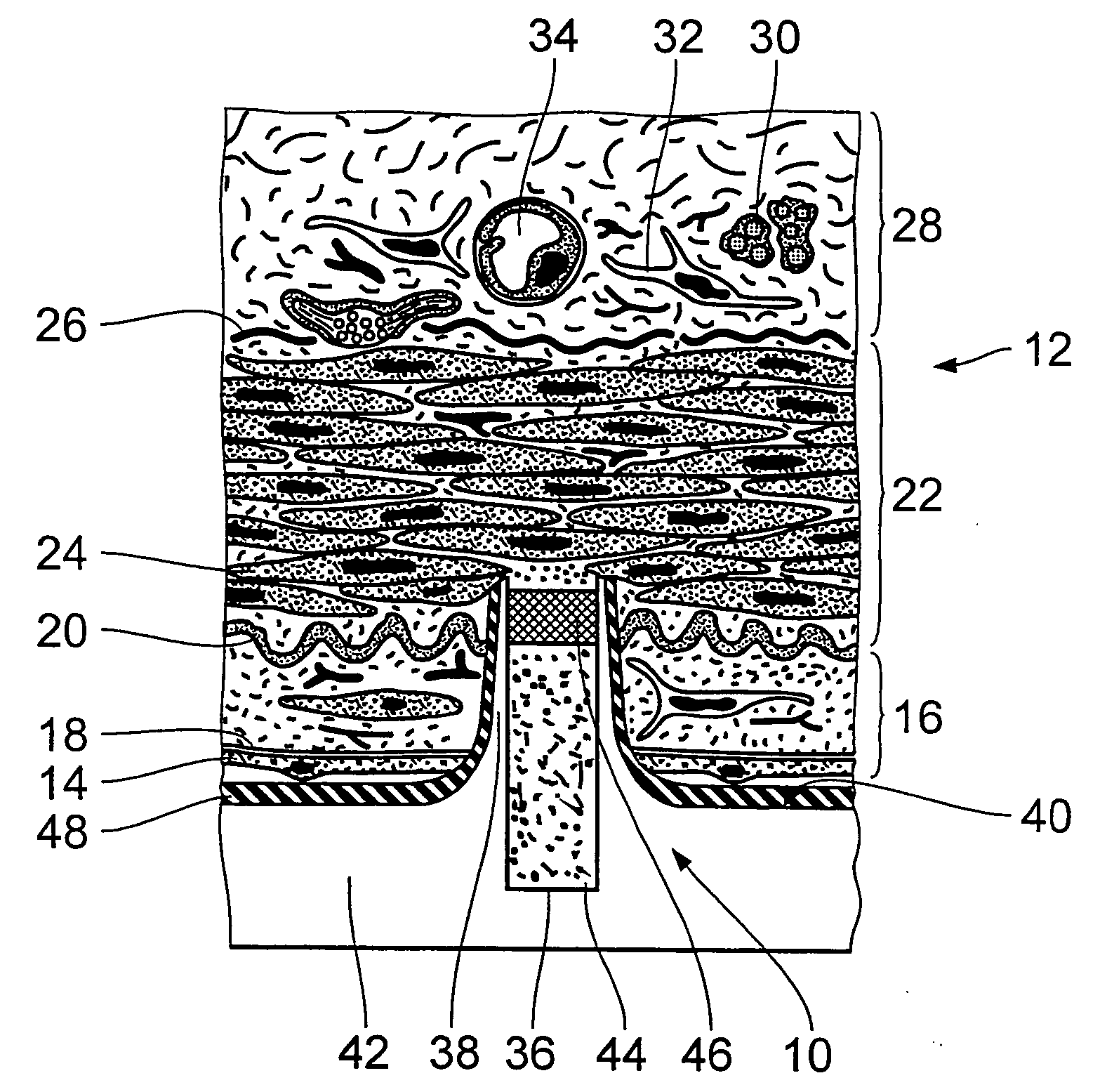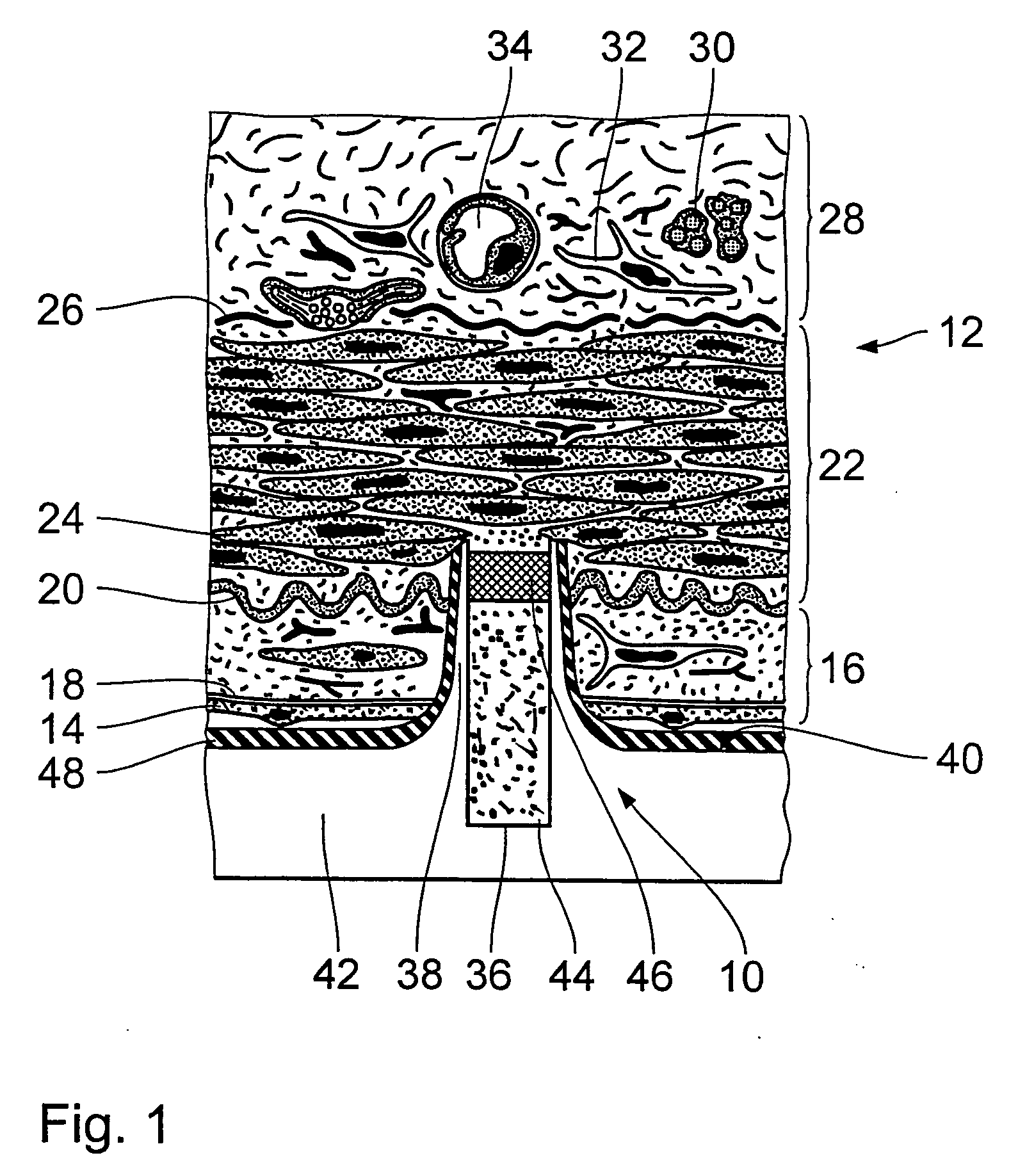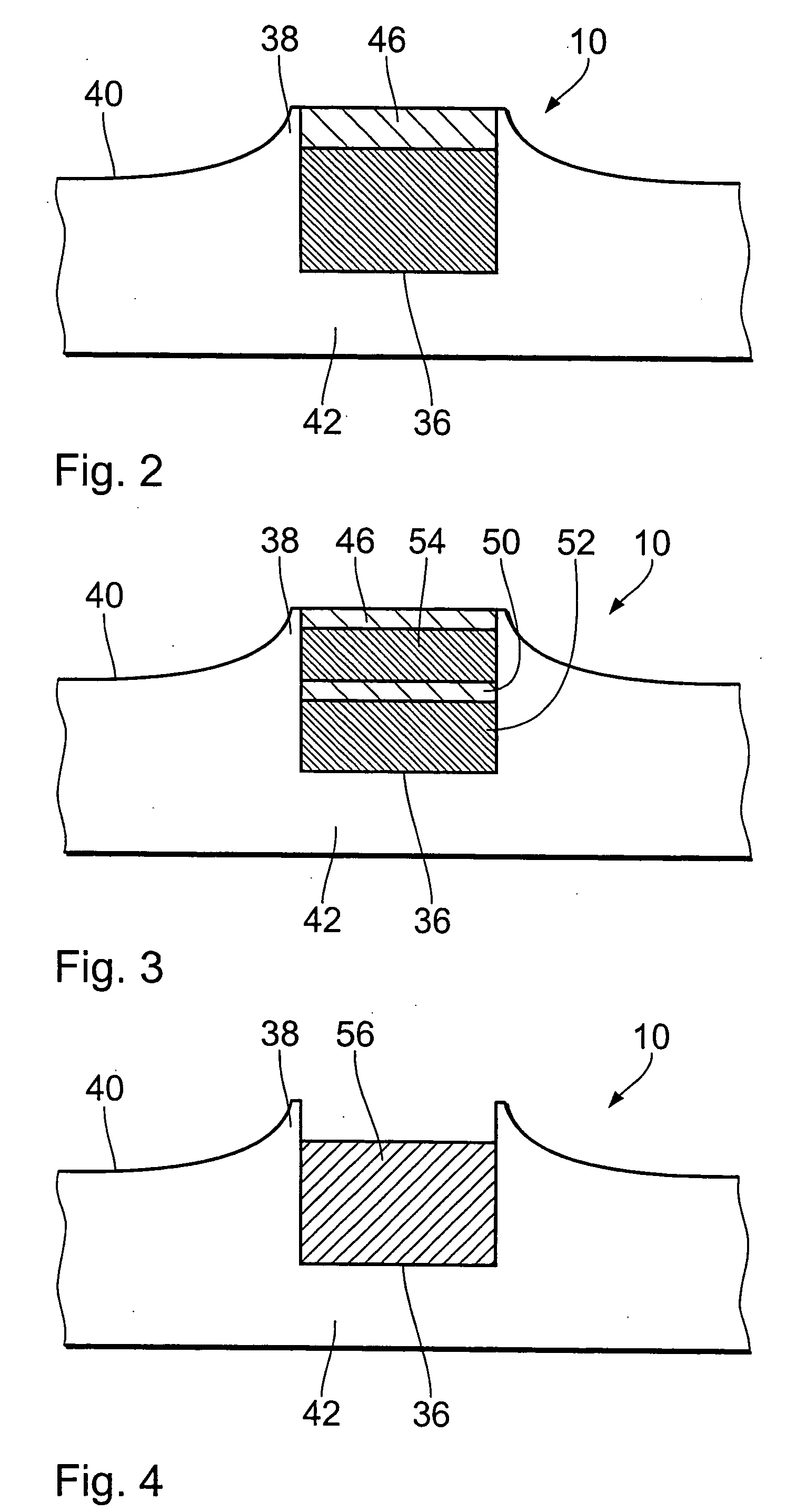Endovascular implant for the injection of an active substance into the media of a blood vessel
- Summary
- Abstract
- Description
- Claims
- Application Information
AI Technical Summary
Benefits of technology
Problems solved by technology
Method used
Image
Examples
Embodiment Construction
[0035]FIG. 1 diagrammatically shows a view in cross-section through an endovascular implant in the region of a microdevice 10 which has already penetrated into a vessel wall 12 of a muscular artery. The endovascular implant can be in particular a stent. The stent is formed from a biocompatible material, for example nitinol, medical steel, tantalum, platinum-iridium alloys, gold or the like. It is also possible to use a biodegradable magnesium alloy. The design and dimensioning of the stent can be variable to a wide extent. They only have to permit the arrangement or the provision of the microdevices 10 on the outside surface thereof.
[0036] In accordance with prevailing histological teaching, the vessel wall 12 of the artery is divided into three layers. Following the inner endothelium cells 14 which line the vessel wall 12, there extends the region of the so-called intima 16 which is delimited by a basal lamina 18 and an inner elastic membrane 20. The intima 16 is adjoined by the m...
PUM
 Login to View More
Login to View More Abstract
Description
Claims
Application Information
 Login to View More
Login to View More - R&D
- Intellectual Property
- Life Sciences
- Materials
- Tech Scout
- Unparalleled Data Quality
- Higher Quality Content
- 60% Fewer Hallucinations
Browse by: Latest US Patents, China's latest patents, Technical Efficacy Thesaurus, Application Domain, Technology Topic, Popular Technical Reports.
© 2025 PatSnap. All rights reserved.Legal|Privacy policy|Modern Slavery Act Transparency Statement|Sitemap|About US| Contact US: help@patsnap.com



